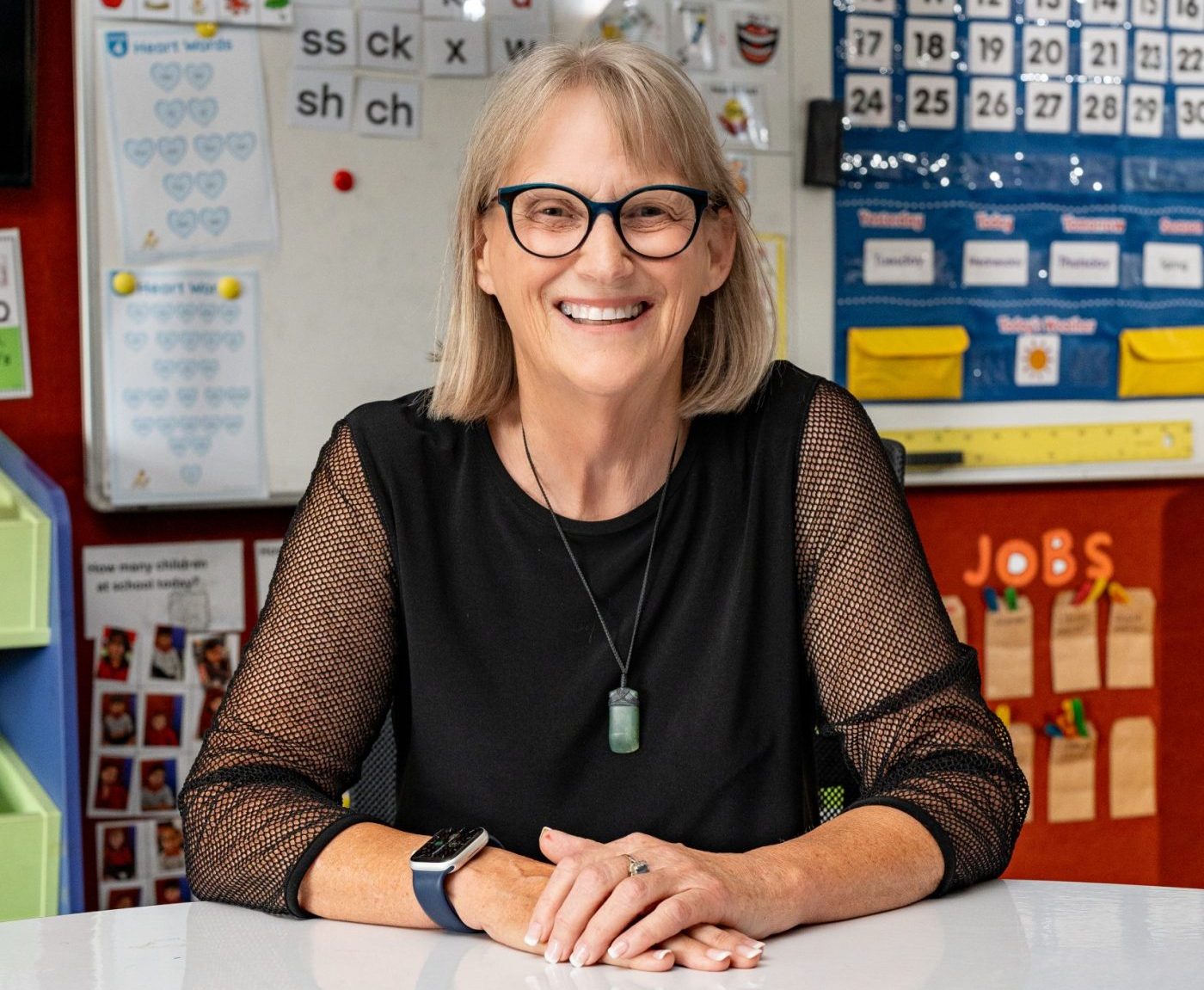
How long have you been an educator, and where did you train?
I’ve been in education for over 40 years, training at Hamilton Teachers College. I started my career teaching in south Auckland and then moved to the Howick and Pakuranga area, where I taught at Sunnyhills School. In 2004, I had the honour of becoming one of the foundation associate principals at Baverstock Oaks School. The two APs were appointed midway through 2004, giving us the unique opportunity to help set up a new school from the ground up.
When did you become principal of Baverstock Oaks School?
Our foundation principal Mary Wilson left at the end of term one in 2018, and I was extremely fortunate to step into the role of principal. It’s been a rewarding journey to carry forward the legacy and vision of our school.
What’s the best thing about being an educator and principal?
Over the years, I’ve built strong connections with the students I’ve taught, their whānau, and the dedicated staff I’ve worked with along the way. Teaching allows you to make lifelong friends, especially with colleagues who share a passion for education and a desire to make a difference for the tamariki we teach. Each day is unique, and that variety keeps our work both rich and rewarding. Throughout my career, I’ve been fortunate to have many leadership opportunities and talented mentors who have encouraged my growth. Leading Baverstock Oaks School is a privilege, and I’m deeply grateful for the support of our parent community, our leadership whānau, the staff I’ve worked alongside, and our boards of trustees. I truly enjoy hearing of the successes of the past students and staff I have taught or led. Some of these students and staff have made outstanding achievements.
What’s special about Baverstock Oaks School?
When Baverstock Oaks first opened, Mary Wilson had a vision for the school to serve as the “village green” for the new and diverse community. Over the years, we’ve worked hard to make this a reality, welcoming our community and encouraging their involvement in their child’s learning journey. Our school’s diversity is one of its most defining characteristics. We have students from all over the world, many of whom speak English as a second language. Our board of trustees has dedicated resources to support these students in acquiring English in a safe, supportive environment, creating an atmosphere where both students and adults learn from each other’s cultures. We’re committed to providing a safe space where students feel happy, enabling them to learn effectively. Our staff members are valued and encouraged to grow in their roles. As an inclusive school, we cater to neurodiverse students, ensuring their individual needs are met in an environment that is both differentiated and inclusive. We’re very fortunate to have four hectares of land that offer students the chance to participate in a variety of sports and outdoor activities. Our high-quality learning environment supports diverse learning needs, with 32 single-cell classrooms that can open up for collaborative learning. Every learning area is designed similarly to ensure equity for all our students.
Is there anything you’d like improved in the education or school management sector?
Many principals, myself included, feel the strain of trying to provide a quality education on a limited budget. The resources we receive for students with learning needs are insufficient to meet the standards we aim to provide for all students. Catering for the needs of these students with limited resources impacts hugely on the quality of education for all students. Securing quality teachers is becoming increasingly difficult as many of these teachers are leaving the profession due to the increasing complexity of the job. Schools have faced numerous changes over the years, often driven by government shifts. Having education managed outside of politics would greatly benefit both our dedicated teachers and students.
How is the relationship between Baverstock Oaks School and its immediate local community?
Creating a “village green” environment has been essential in helping families who are new to New Zealand feel welcome. Our community embraces Kiwi culture while also celebrating its diverse identities. Baverstock Oaks School offers a space where families can connect with others from their countries of origin, as well as build new relationships. Our school remains open to community groups, providing rooms for adult English language learners and other local initiatives. This strengthens our role as a community hub and fosters a welcoming, inclusive environment for all.









